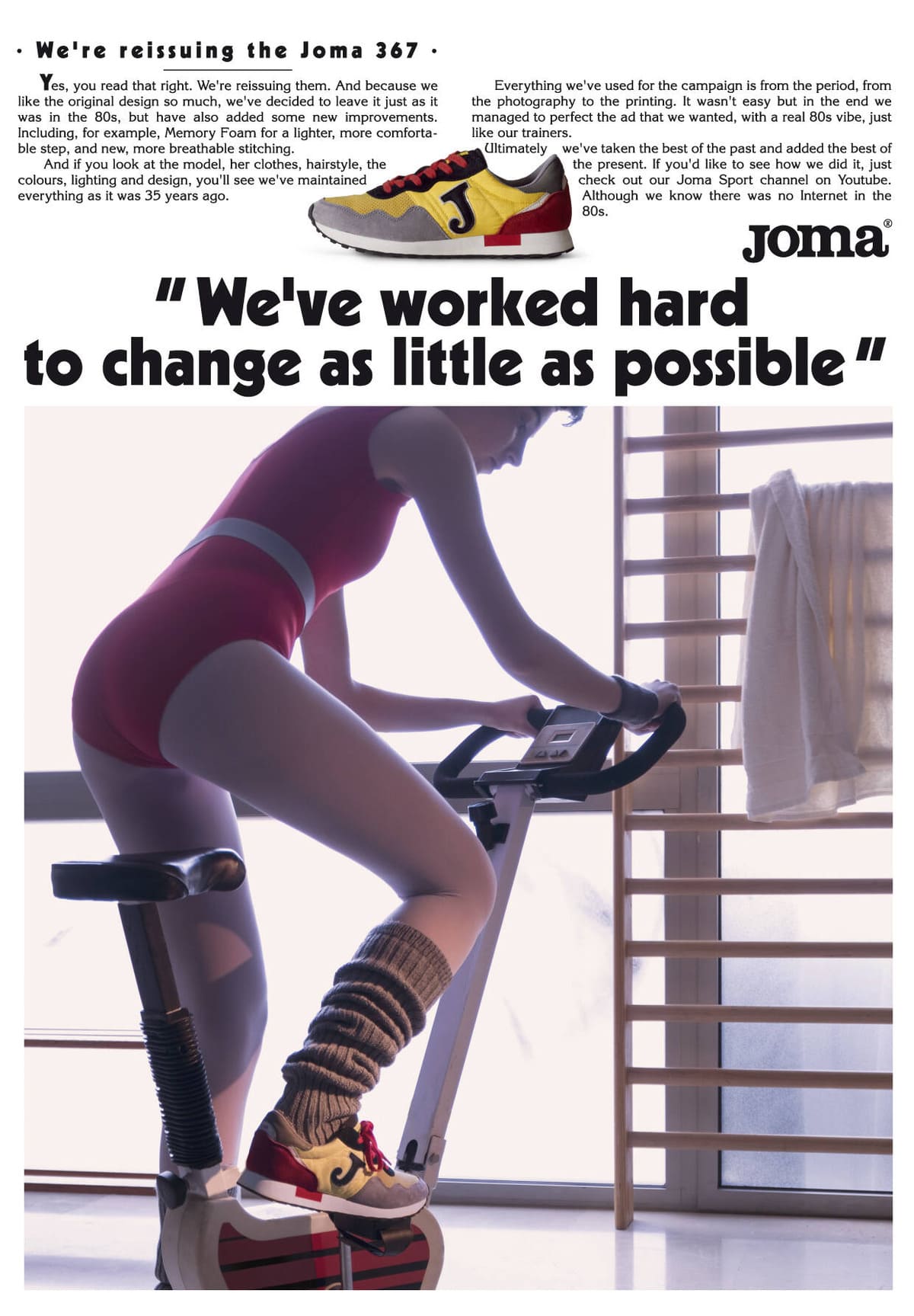Joma, a revered name in sportswear, was established in 1965 by Fructuoso López in Portillo de Toledo, Spain. The brand, named after López’s son José Manuel, began its journey as a modest operation with only eight employees. Over the decades, Joma has grown exponentially, earning a solid reputation for manufacturing high-quality football shoes, uniforms, and sports apparel. This commitment to excellence laid the groundwork for Joma’s ascent in the sportswear market, positioning it as a formidable competitor against established giants.
By the 1980s, Joma’s expansion was evident with the inauguration of its second and third factories, boosting its workforce to 70 employees. The brand’s dedication to innovation and quality was rewarded in 1992 when it became the top seller of football shoes in Spain. This success was bolstered in 1997 when Joma led the market in football shoes and futsal clothing sales, thanks to its collaborative development efforts with players and experts. This period marked Joma’s transformation from a small local business into a modern enterprise, with extensive facilities and a dedicated research center focused on advancing sports footwear technology.
In the new millennium, Joma’s global footprint expanded with subsidiaries in the United States, Germany, China, and other countries. By 2007, Joma was recognized as one of Spain’s most internationally distributed brands. Its sponsorship agreements with numerous professional teams and athletes underscored its global influence. The brand’s prominence continued to rise, particularly in the 2010s, as it became a technical partner for Olympic Committees and national football teams worldwide. Joma’s journey from a small workshop to a global sportswear powerhouse is a testament to its unwavering dedication to quality and innovation.
Cool 90s Joma TV Commercial
How to tell if Joma is vintage from the logo
Joma, a well-known sportswear brand, has seen its logo evolve significantly over the years. From its inception, Joma has aimed to stay relevant and appealing to different generations of athletes and sports enthusiasts. By examining the logos used in different eras, you can identify if a Joma product is vintage. Below is a guide to help you determine the vintage of Joma items based on their logos.
1965 to 1990s Joma logo
- The original Joma logo featured a bold, stylized depiction of a bird, which was prominent and recognizable.
- This logo emphasized the strength and dynamic nature of the brand, which was important for establishing its identity in the sports market.
- It is characterized by a clean, solid black design, often without any text accompanying it.
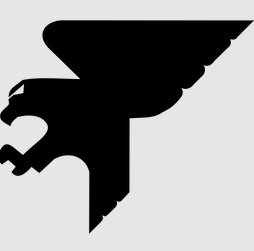
1965 to 1990s Joma logo
1965 to now Joma logo
- The wordmark ‘joma’ in a bold, rounded font was introduced and became a staple in their branding.
- The blue color of the text is a distinctive feature of this era, symbolizing trust and reliability.
- This logo has remained consistent in terms of font and color, indicating the brand’s effort to maintain a cohesive visual identity over the years.

1965 to now Joma logo
2000s to now Joma logo
- The latest evolution of the Joma logo features a modern, sleek ‘J’ emblem, which is often seen on their contemporary products.
- This design is simplified compared to the previous logos, focusing on a minimalist and streamlined appearance.
- The ‘J’ emblem is typically presented in a solid black or white color, which aligns with current trends in logo design for sportswear brands.

2000s to now Joma logo
How to tell if Joma is vintage from the tags
The evolution of Joma’s clothing tags reflects the brand’s growth and changing design aesthetics over the decades. From the simple, bold tags of the early years to the more modern and varied designs of recent times, each era’s tags provide a snapshot of the brand’s identity and production practices. This guide will help you identify the vintage Joma pieces through the distinct features of their tags from the 1990s to the 2010s.
Can’t identify your vintage tags or labels? Upload a picture on our vintage tag identification page, and we’ll help you out!
1990s vintage Joma tags
- Typically feature a bold, blue “J” logo.
- The brand name “Joma” is written in a classic serif font.
- Tags often include size indicators, usually with country codes.
- Simple and straightforward design, primarily in white and blue colors.
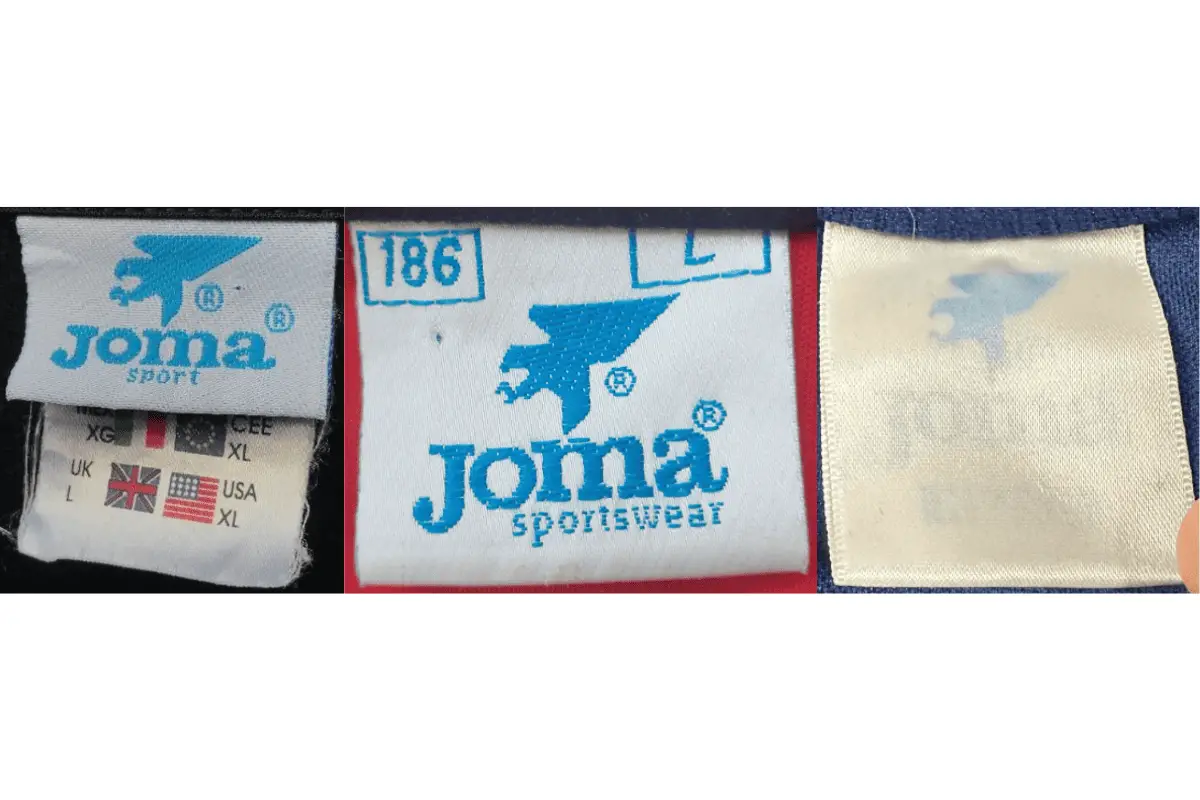
1990s Joma tags
2000s vintage Joma tags
- Introduction of the modern “J” logo with a more streamlined look.
- Tags may incorporate additional colors like black or grey along with blue and white.
- Size indicators are more detailed, often including multiple country sizes.
- Occasionally includes additional text such as “Sport” or “Sportswear.”
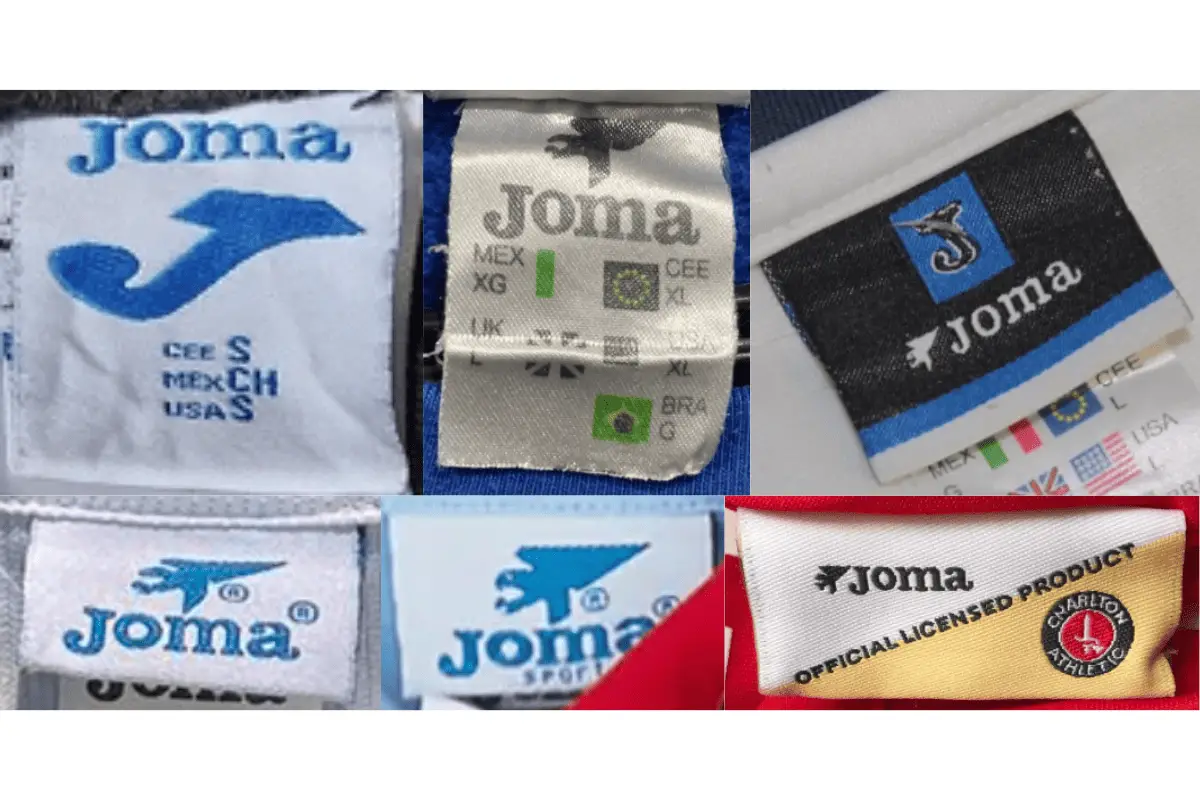
2000s Joma tags
2010s vintage Joma tags
- Tags feature a more diverse range of colors and layouts.
- The “J” logo is prominently displayed, often in a contrasting color block.
- More detailed and modern font styles used for the brand name and other text.
- Tags often include additional branding elements like “Official Licensed Product.”
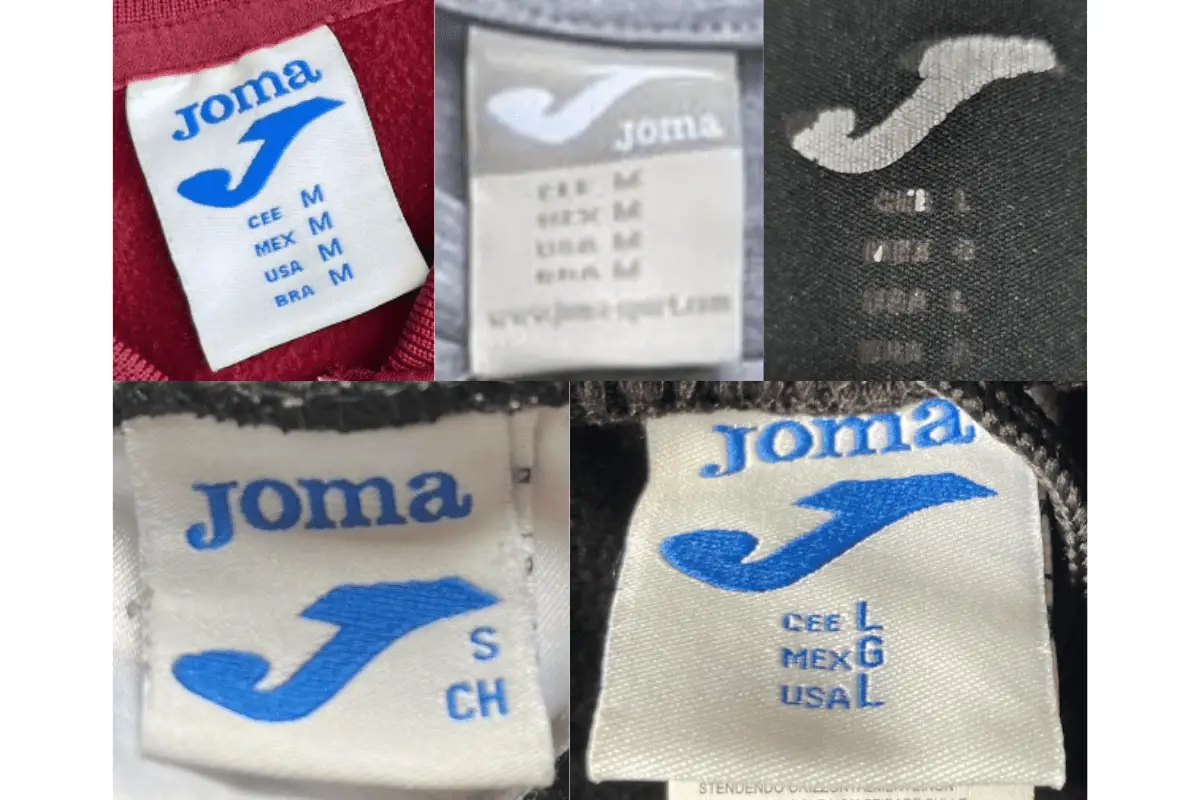
2010s Joma tags
